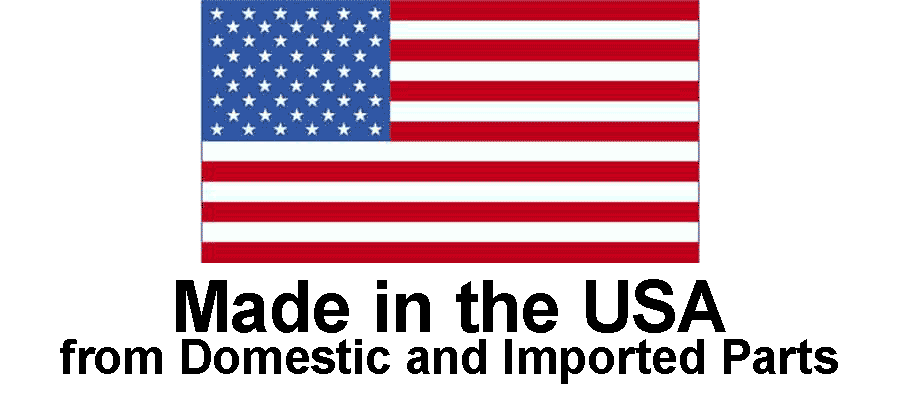
Advancement International Ltd.
595 Circlewood, Aurora, OH 44202(USA)
Email: sales@LugsDirect.com
Phone: 330-562-8983 | FAX: 330-562-9990
 |
Operated By: Advancement International Ltd. 595 Circlewood, Aurora, OH 44202(USA) Email: sales@LugsDirect.com Phone: 330-562-8983 | FAX: 330-562-9990 |
IHIConnectors |
Brumall Manufacturing Corp. |

Greaves Electrical Connectors |
Accepted forms of payment: |
||||||
 |
|||||||||
Question: How do Surface Mount heavy duty wire terminals stay secure if there is a wire pulling on them?
Answer:
They don’t. SMT (SMD) wire terminals need to be protected from long term wire pull forces.
All solder joints on PCB terminals, especially Surface Mount ones, have to be protected from long term force strain due to solder creep over time. A good collection of the science behind solder creep is viewable here: Precautions-when-using-SMT.pdf.
NRTL’s (Nationally Recognized Testing Laboratory) such as UL, test and inspect most of these electrical applications. UL and IEC write the main standards to conform to for electrical apparatus.
These standards require that the wire connectors meet pull out requirements or be tied down with strain relief devices, so the SMT lug would not creep over time.
There is a separate UL standard to make “internal” wired connection easier to implement, called UL486E. This is a derivative of the base standard UL486A-B. UL486A-B covers almost all wire connector terminals in the USA (and similar standards under IEC for most non US countries).
The "concession" standard, UL486E, allows much lower pull out forces for factory installed wiring that would be coming off a boxed "delicate" device that is not up to having wires anchored and yanked on it.
A wire strain relief is provided and the device is allowed to pass with low short term wire pull numbers. Lower dynamic secureness numbers are also permitted. This is the circular orbit “stirring” wire pull test that checks for wire strand breakage or strands working lose.
For SMT /SMD, close to zero pull is the right number to design the application around and so adequate wire tie down negates the creep issue completely.
The short term screw tightening and loosening torque forces are not a creep issue. Solder joints and FR4 have sufficient short strength to allow brief periodic tightening and loosening of screws for wire compression and release.
Twist off or tear off tests, depending on screw axis to solder plane, are a wise precaution for in-production assurance of soldering integrity.
These in-process tests are similar to the pull tests done on solderless crimp terminations to ensure that the connection strength is maintained.
With soldered joints, the electrical integrity follows from the mechanical strength which is much easier to test. Both rely on good wetting and bonding of the metals, a gas bubble free solder mass and solder free of a coarse fractured structure.
_________________________________________
Question: Why bother with an SMT wire terminal- why not just bolt a ring lug or mechanical lug to the PCB bolted through the whole board?
Answer:
Certainly a bolt through the lug terminal and PCB will prevent the lug from falling off the board but the bigger issue by far is the creep in the PCB plastic itself, since any bolted through connector concept is doomed to creep loose as the FR4 (or any other polymer) moves under the screw pressure. Do not do it unless you have solved the FR4 plastic creep issue.
Better by far to divide and conquer the issues, use a soldered lug to create a “gas tight” soldered joint with the foils, and then deal with the creep issue in the wire strain relief.
Whether using SMT / SMD or THT, zero out the wire pull force with strain relief and use heavy foils.
SMT needs a heavier foil since no current sharing can be achieved without layer to layer current shunts.
With SMT especially, do not overheat the foil "glue" when soldering SMT (SMD) onto the foil. A foil blister (delamination), or even partial adhesion breakdown, reduces significantly the ability of the foil to conduct its heat through the foil/plastic interface.
THT (Through Hole) terminals are always the first choice for PCB high power lugs selection since you can then use multiple layers to share current and have better mechanical anchoring.
_________________________________________
Question: Is there a way to use bolted through lugs on a PCB?
Answer: Yes – in larger sizes of cable and current IHI has a series of hybrid SMT/THT lug for wires up to 350kcmil. Hybrid SMT/THT lugs can be found here.
To address long creep the contact spring has to be fairly strong, never run out of take-up room as the PCB gets thinner (adequate stroke to take up the creep) and have very long lasting (low vapor pressure) dielectric lubricating "grease" to lubricate to eliminate movement fretting and eliminate air (oxidation). Each application needs to be tested by the user to ensure all of the assumptions play our as intended. High cycle stress testing is highly recommended. High temperature, over current, testing is very useful for accelerated age testing of the creep and contact integrity issues.
Counter intuitively the conductive particle filled "greases" are not seen the answer for long term life.
Copyright © 2026 Advancement International Ltd, Aurora Ohio - All Rights Reserved
Advancement International Ltd is a registered company of Ohio, USA
IHI® is the Registered Trademark of International Hydraulics Inc.
LugsDirect.com is owned and operated by Advancement International Ltd.
DUNS # 148692197, REGISTERED WITH CCR, CAGE / NCAGE NUMBER 5A6R9,
A2 WOMAN OWNED SMALL BUSINESS, NAICS 423610, SIC 3643,
Made in the USA from domestic and imported parts. USMCA CERTIFICATES AVAILABLE